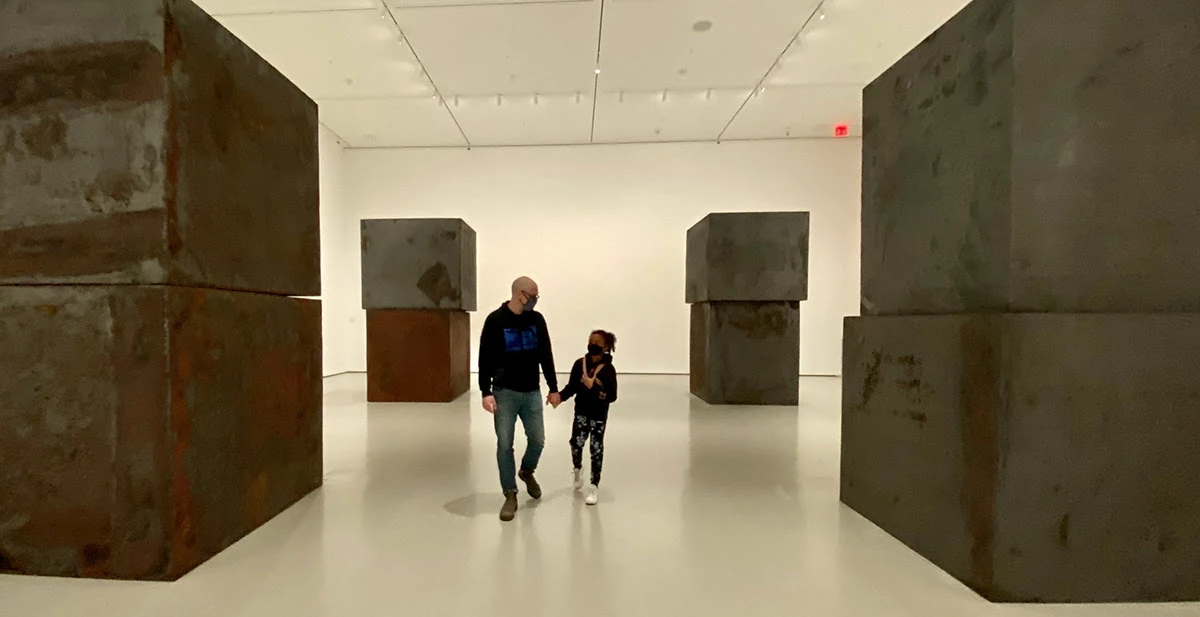Years ago, before the birth of our fourth, we took a weeks-long family trip out West for a National Parks Greatest Hits tour. We started in Yosemite. I had never seen a landscape so epic in real life. I remember standing at the bottom of a waterfall and the mist hitting my face. I started crying. At that moment, I felt small. Not physically, per se. Although I did feel that. I mean more holistically. Like the entirety of my being was, in fact, small—cosmically small.
Later in the trip, the family dragged me to The Grand Canyon. I didn’t want to go, wondering why we would drive out of our way to see a big hole in the ground (a literal take on a grand canyon). But I was overruled, and so there we were. I remember walking up to the edge and my mouth dropping. Oh, it's a GRAND CANYON. Got it.
Again, cosmically small.
Nature does that. In the grandness of the landscape, we can properly order ourselves inside the infinite expanse of time and space. Nature conjures up feelings never felt, and it mines out of us new desires. In a sense, I think it completes us.
If you take the Metro-North out of Grand Central Station, you train alongside the Hudson River and eventually stop in Beacon, a little town overrun by Brooklyn expats. Within walking distance of the train station, you’ll find the DIA:Beacon, a contemporary arts museum nestled alongside the river.
Here is where I first encountered the work of the artist Richard Serra in real life. His Torqued Ellipses series, comprised of four mammoth steel structures rising some 13’ high, fills the bottom of one wing of the museum. You don’t look at the sculptures; you encounter them. You walk around them and through them as their immense size makes the pieces feel off-balance and also somehow completely stable. As I walked through the first in the series of sculptures my stomach literally turned, a visceral response to the art.

At MOMA, I walked with my daughter through another Serra piece, Equal, a set of eight steel squares stacked in pairs. Each cube of the sculpture weighs 40 tons. We wondered how such heavy boxes could perch so delicately. Once again, cosmically small.
At its best art can prompt us just like nature, pushing us to examine an inclination or a feeling. It compels us to look beyond the work itself and search for meaning in it and in ourselves. The grandeur of Yosemite and the weight of Serra made me feel small. But they didn’t make me feel alone. Each encounter nudged me to look for something else, something bigger than myself. Something that will outlive me—transcendence.
This brings me to work. Can our work give us the same feeling? Not every day, of course; that would be overwhelming, and nothing would ever get done. But, when we step back from it, do we find purpose or meaning? Do we see work that makes the world a better place? Are we building something that will outlive ourselves? Do we feel cosmically small yet also cosmically connected? Do we sense something transcendent?
In a talk given by artist Makoto (Mako) Fujimura at the Leesburg Center for the Arts, he asks, “...the question is not so much ‘why art?’ but ‘which art?’ We are presented with a choice. And this choice is a responsibility of cultural stewardship. Just as we have responsibility for natural resources, so do we have to take stewardship care of our culture.”
I think we can ask the same question of our work—it’s not so much “why work?” but “which work?” What are we putting our minds, hands, and days towards so that we are stewarding our resources, no matter what they are? These are the questions that shape not only our lives but our surroundings.
“...the question is not so much ‘why art?’ but ‘which art?’ We are presented with a choice. And this choice is a responsibility of cultural stewardship. Just as we have responsibility for natural resources, so do we have to take stewardship care of our culture.”
Makoto Fujimura
At FiveStone, our motto is “making things that matter,” it's these same questions and ideals that we are chasing in our work and giving definition to “things that matter.” Of course, we don’t always find them. We are idealists bound by pragmatism, after all. But we do try. The chase moves us, and it compels us to wake up each day and leave a small marker on the world that says, “I am here.”
What we make—and how we make it—has consequences for the world. We shape the world as the world shapes us. And so by poking a pin into the fabric of the universe that claims, “I am here” we are also claiming, “Things are better ‘here’ than I found them.”
We look for partners that believe the same thing. Partners that steward their resources towards goodness, that understand we are all connected, that see a world that will exist long after they are gone, and who want that world to be fuller and brighter than this one.
These are the things that move us; these are the things that matter and these things that make us feel cosmically and wonderfully small.
Onward,
Jason
The FiveStone team is now part of Whiteboard.
Since 2001, we have worked with some of the most courageous organizations on the planet. We've walked alongside these organizations by offering strategy, branding, and campaigns to bring about positive change in the world.
As we think about how we might continue to live out our mission—“amplifying positive impact”—over the years ahead, we are excited to announce that we are joining forces with Whiteboard.
Whiteboard is an award-winning creative agency and Certified B-Corp. Like FiveStone, they believe in the power of Design to make the world a better place. It is clear to us that by bringing together the power of our strategic focus with their strong digital offering, we can truly build—as Whiteboard says—”the world that ought to be.”
We are thrilled to join Whiteboard and cannot wait to bring Whiteboard’s full suite of services and offerings to all our partners.
See more about Whiteboard here or visit the archived FiveStone site here.
